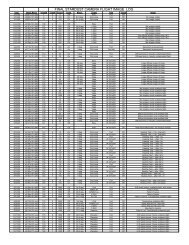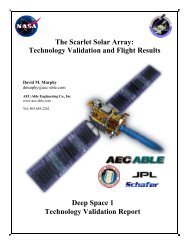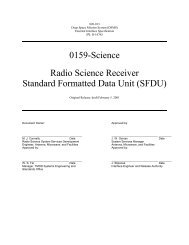PDS_VERSION_ID= PDS3 - PDS Small Bodies Node
PDS_VERSION_ID= PDS3 - PDS Small Bodies Node
PDS_VERSION_ID= PDS3 - PDS Small Bodies Node
Create successful ePaper yourself
Turn your PDF publications into a flip-book with our unique Google optimized e-Paper software.
3 APPENDICES<br />
Appendix - Data Archive Terms<br />
Definition of Terms:<br />
Archive<br />
Archive volume,<br />
archive volume set<br />
Data Product<br />
Data Set<br />
Experiment Data<br />
Records<br />
Reduced data records<br />
An archive consists of one or more data sets along with all the documentation and ancillary<br />
information needed to understand and use the data. An archive is a logical construct<br />
independent of the medium on which it is stored.<br />
A volume is a unit of medium on which data products are stored; for example, one DVD. An<br />
archive volume is a volume containing all or part of an archive; that is, data products plus<br />
documentation and ancillary files. When an archive spans multiple volumes, they are called<br />
an archive volume set. Usually the documentation and some ancillary files are repeated on<br />
each volume of the set, so that a single volume can be used alone.<br />
A labeled grouping of data resulting from a scientific observation, usually stored in one file.<br />
A product label identifies, describes, and defines the structure of the data. An example of a<br />
data product is a planetary image, a spectrum table, or a time series table.<br />
An accumulation of data products. A Data set together with supporting documentation and<br />
ancillary files is an archive.<br />
Nasa Level 0 data for a given instrument; raw data. Same as CODMAC level2.<br />
Science data that have been processed from raw data to NASA Level 1 or higher. See Table<br />
for definitions of processing levels.<br />
Standard data<br />
product<br />
A data product that have been defined during the proposal and selection process and that is<br />
contractually promised by the PI as part of the investigation. Standard data products are<br />
generated in a predefined way, using well-understood procedures, and processed in “pipeline”<br />
fashion.






